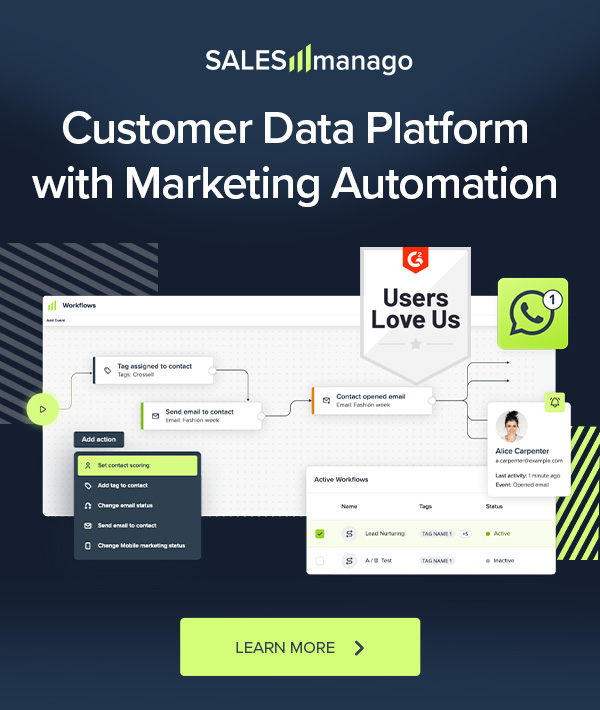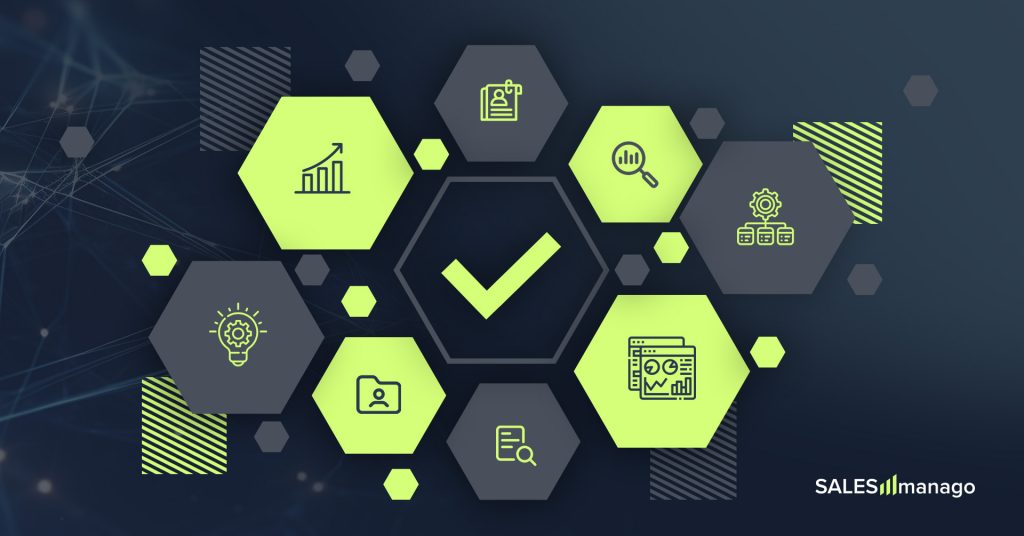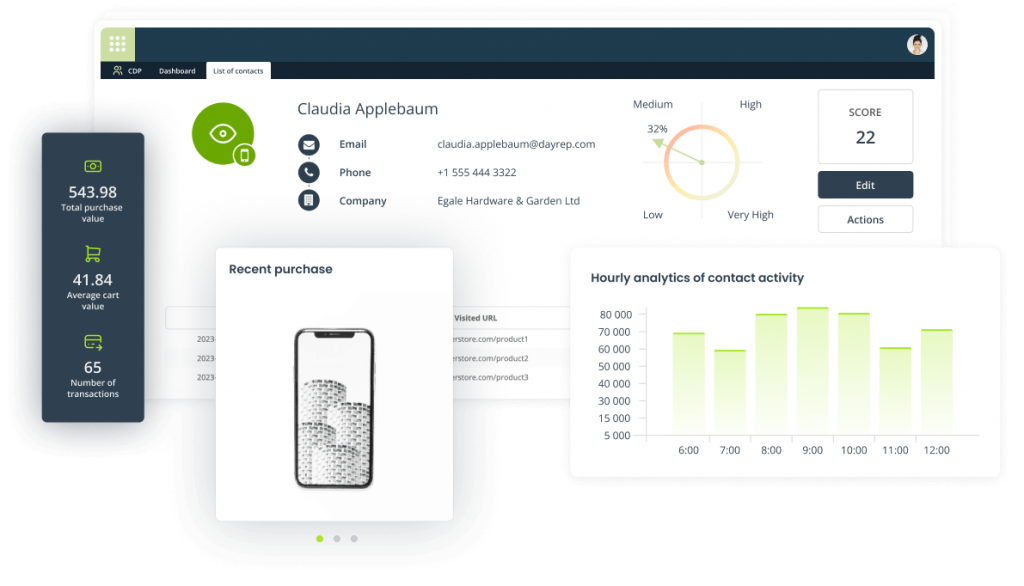
Initiating contact with leads is a pivotal part of sales, as it directly increases sales. Yet only about 40% of companies assign and follow-up on a lead within an hour, despite the fact that doing so makes the lead 7 times more likely to become a prospect, which in turn results in 30-50% of all sales going to the first responders. What techniques and tools help them to be one step ahead of the competition?
There is reliable data to use in developing your sales strategy, which is all too often treated as “interesting trivia”. So here’s something that isn’t just fun trivia: 30-50% of all sales go to first-responders, which is less than 40% of companies. This implies that while having quality product matters, the majority of customers put the speed of service over quality. Lead generation and nurturing is a hugely important aspect of any business. But here’s the problem: is the management of your sales team aware of just how important it is to act quickly in response to new leads? Do you have a method of qualifying them and measuring the effectiveness of the follow-up accurately? Well, this article is going to help you with exactly that.
Most importantly – Act quickly
Leads decay at a rapid rate, even within hours. Whereas for B2B companies this process is slightly longer, because businesses simply take more time to make an informed decision. For B2C, this process is lightning fast. A customer that is looking for a specific product is going to turn away from a sub-par service and go to your competitor within actual minutes. That means, your window to follow-up on a lead is very narrow.
The methods of pursuing a lead are broad and range from a traditional call-back to massaging with a varying degree of automation involved. Of course, automation allows you to act incredibly fast, almost in real-time, but at the cost of being unable to really establish a personal connection.
Combine fast reaction time and quality with personalizing content
A call-back is the golden standard of B2B lead pursuit, but it takes precious time for your salespeople to be assigned leads and try to contact them. That’s also, of course, completely omitting the fact that many leads don’t leave a phone number during their first interaction with your service. The point is, there is no reason not to attempt to automate this first stage, that is to say, respond to a lead with an automated message as soon as possible and start planning a call-back.
While you’re at it, try to qualify the lead with this first message. Try to ask general questions like what made you interested in our product? What goals do you hope to accomplish with us? If your lead appears after gaining some form of gated content, ask them whether they liked it (or found informative, etc. depending on what kind of gated content it is). If the lead didn’t leave you their phone number, ask for it, this can only speed the process up.
Meticulously qualify your leads
Leads are unfortunately not created equal, yet companies often act as if they were. Is every single person who visited your website and looked at your offer interested in the same way? Does everyone who downloaded a free ebook or any other form of gated content from you, have the same strong interest in your company? Obviously not, only about 20% of leads convert into sales. The time of your representatives is limited, they can’t follow every single lead, you need to be able to distinguish between those worth pursuing and those that aren’t. And that comes down simply to the amount of available data.
The information about the lead’s interests, how much time they spent browsing your website, how often they come back, and whether they downloaded any form of gated content, can be gathered with marketing tools like automated forms or requests for data, or deduced from their behavioral patterns. You should have a template of what a good lead looks like based on what other successful leads looked like in the past and you should be comparing every new lead to that theoretical frame.
Construct your “ideal customer”
You must have a clear idea of the market niche you’re trying to fill and that means answering the question: who are your ideal customers? What needs do you want to satisfy, what challenges your product addresses? Regardless of whether you’re selling to individual customers or businesses, people aren’t numbers on a graph. And companies have ambitions. Once you’ve established who is your target, the rest is a data-mining game.
Leads can be scored depending on their activity and segmented based on their behavioral data. By doing this, you can see what made the contacts interested in your product, and distinguish between hot and cold leads, so your sales can concentrate on the former. Only a small fraction of leads actually convert, so you want your representatives to engage those that have the highest chances of becoming customers.
Manage your existing relationships
Retaining a customer can be several times more cost-effective than acquiring a new one, but any retained customer was at some point but a fresh lead, and pursuing leads falls unto your salespeople. Neither sales nor account-managing are inherently stable – priorities and markets shift constantly, your customers’ interests may reorient, and so you need to be responsive to it. For this reason, you have to connect sales with account-managing.
Sales isn’t a one-time, fire-and-forget process that ends with a purchase, especially for companies that rely on stable, long-term relations with partners. Your salespeople need to be aware of this. Their goal is to build a lasting relationship, not to just hawk a product. Because your account managers rely on sales for starting this relationship and because their work can be much more profitable in the long run, the two need to work in tandem and understand each other.
Outside of being alerted whenever a new, prospective lead appears, your managers can keep tabs on the contacts’ activity and keep them engaged. Part of it is sending new information and offers to them, but another is keeping a close eye on their activity to know what they personally found interesting. This can be much more meaningful than surveys or questionnaires and will also inform you about what could interest new, potential customers.
Utilize all the available tools
The key factors in lead management are the resources your company has, the analytical tools you use, and the sheer amount of leads you’re able to generate. There’s an interesting cross-play here, you’ll notice that if you don’t have a solid foundation and good tools, you won’t be able to follow-up on a large number of leads and they’ll be wasted.
Ideally, you want to improve your service in a somewhat linear fashion over time, as you gain more leads that convert into buyers, you should funnel resources gained that way back into lead management, which will result in more leads, and that’s how you get the ball rolling. You have to have a systemic framework that will help you qualify your leads and a response mechanism that will initiate the connection quickly.
Responding to leads quickly and adequately is a tough balancing act, but is absolutely necessary if you want to be a successful business. Automation and data-analyzing tools, when combined with a personal approach from salespeople with your most important leads, is how you achieve that success.
marketing automation
marketing automation




 Follow
Follow













![[New Feature] Shine the light on your hidden visitors with Spotlight](https://blog.salesmanago.com/wp-content/uploads/2024/04/1-9-1024x536.png)


![[New Feature] Unlock Deep Behavioral Personalization with Product Collections](https://blog.salesmanago.com/wp-content/uploads/2024/03/1-3-1024x536.png)
